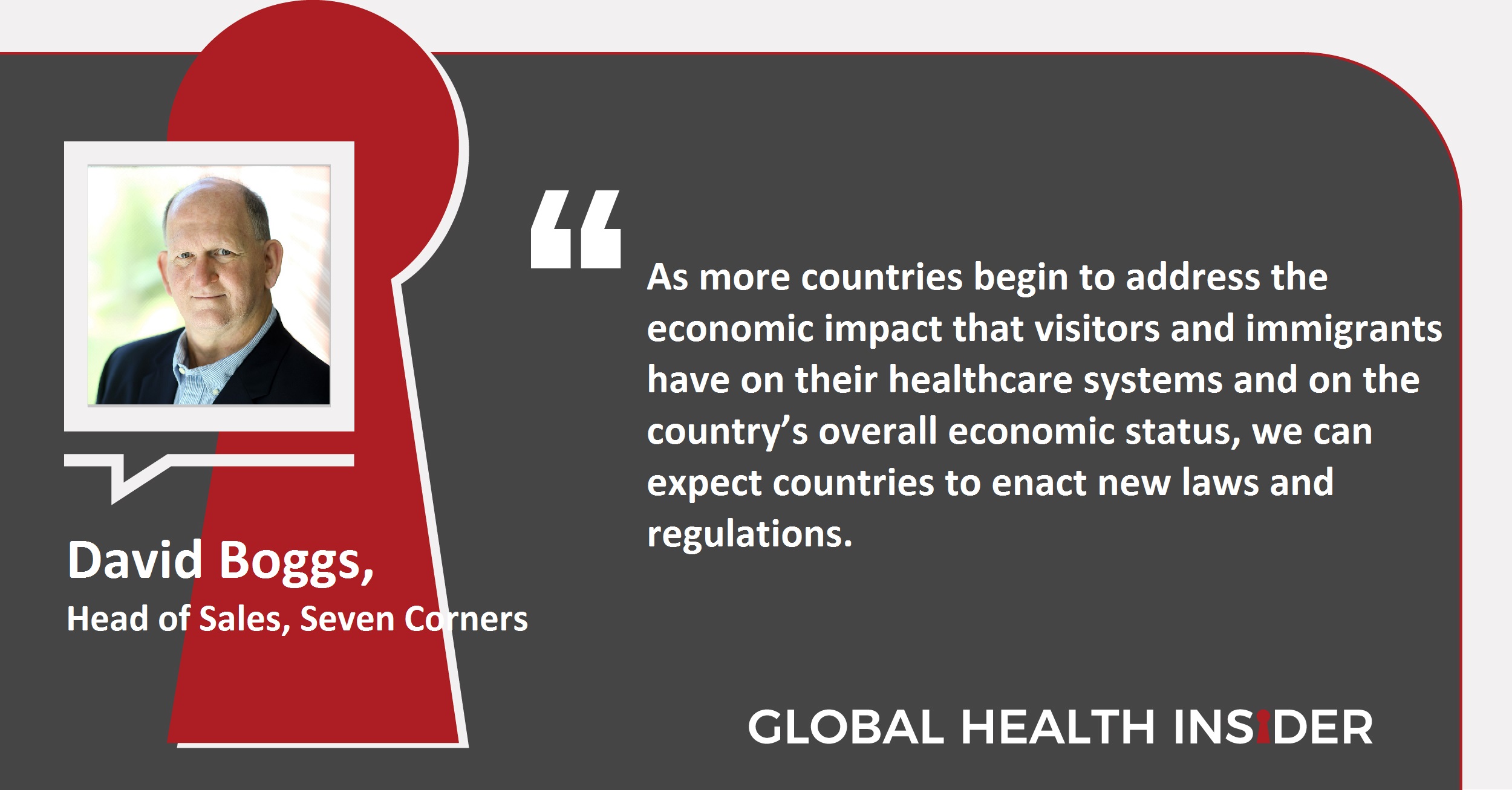Seven Corners' Head of Sales and International Insurance, David Boggs, Shares his Insights about the Evolving International Laws and Regulations, and the Rising Cost of IPMI

We have exclusive insights from Seven Corners' Sales Manager, Mr David Boggs, regarding the trends in the IPMI and international travel insurance market, including evolving international laws and regulations abroad and how they affect international insurance sales.
Mr Boggs has had over 26 years of experience in international insurance sales, including 11 years of work for IMG (International Medical Group) as their International Sales Director. Mr Boggs joined Seven Corners last year and is oversees the growth of sales and generation of revenue in the international travel insurance market.
Learn more about Mr Boggs and his valuable insights in his full interview below.
Q: Can you give us a quick background about yourself and Seven Corners?
A: Seven Corners, Inc. was founded in 1993 as an innovative and service focused international travel insurance and speciality benefit management company. We are based in Carmel, Indiana, and serving a global market. Seven Corners offers a wide variety of customised trip protection solutions to international travellers, corporations, foreign governments, agencies of the U.S. government, and various types of insurance companies.
I am the head of sales for Seven Corners. I oversee the growth of sales and the generation of revenue for Seven Corners’ international travel insurance markets.
Click & Like on LinkedIn
Q: What are the main challenges you’ve faced in recent years?
A: Many countries are bankrupting themselves by providing a variety of medical services to international tourists who visit their country. In an effort to battle the stress on their healthcare system and the financial impact on their economy, some of these countries are now starting to require some form of health insurance for visitors or immigrants.
In “Global Health Law: A Definition and Grand Challenges,” it states that “As a consequence of rapid globalization, the need for a coherent system of global health law and governance has never been greater.” In other words, many countries are enacting their own laws and regulations for health care services. Because of this, it is becoming more difficult for organizations and individuals to fully understand their access to care while traveling abroad and more importantly, the variation in the cost of care from country to country.
One example of a change in legal requirements for travelers occurred in 2001, when the Schengen countries established prerequisites for obtaining a visa. These requirements still stand today, requiring that travelers provide proof of insurance for €30,000 ($32,000) with emergency medical benefits, emergency evacuation and repatriation services.
Another example exists in the United States with the impact the Affordable Care Act (ACA) had on immigrants and visitors to the United States. Prior to the ACA, immigrants had a choice of benefit options, with flexible plans that covered them worldwide with affordable pricing.
As more countries begin to address the economic impact that visitors and immigrants have on their healthcare systems and on the country’s overall economic status, we can expect countries to enact new laws and regulations.
Q: What are the current trends in the travel market?
A: International travel continues to increase even as the world experiences a variety of catastrophic events, political unrest and an outbreak of new diseases. According to the World Tourism Organization, international tourist arrivals reached 1 billion in 2012, and an additional 43 million international tourists will enter the market each year. This means there will be over 1.8 billion international tourist arrivals by 2030.
Travel in and out of the United States continues to increase as well. As of October 2016, U.S. citizen travel to international regions excluding Canada and Mexico was up 6.8 percent over the same period in 2015. Inbound travel as of July 2016 was down 2.4 percent, but October saw a rebound of 10 percent. Outbound travel overall was up eight percent through the end of October 2016.
This growth trend is expected to continue in 2017. International tourist arrivals are projecting around four percent growth on average while the U.S. Department of Commerce projects a 3.3 percent annualized growth through 2021.
Q: How do you see your company or the industry’s development within the next few years?
A: Around the world, countries are experiencing an increase in tourism and thus an increase in the number of people accessing their healthcare systems. Moving forward, these countries will have difficulty sustaining this growing health care burden. Although tourism is a vital source of revenue for many countries’ economies, it does not always offset the increased cost of health care. Most countries cannot afford to provide care for their own citizens as well as for new immigrants and visitors.
In fact, Deloitte’s 2016 Global Healthcare Outlook states, “Spending growth is anticipated to accelerate in 2016, topping four percent, and rise to over six percent a year in 2017 and 2018. Growth in several markets — mostly in Asia and the Middle East — will be particularly rapid as public and private health care systems develop in some countries; in addition, the trend towards universal health care is likely to be a growth driver in numerous markets.”
Also, according to the Organization for Economic Cooperation and Development (OECD), “Health care spending has risen faster than economic growth in all OECD countries over the past 20 years.” This means that new immigrants and tourists can anticipate a continued increase in the cost of health care services when traveling or living abroad.


Leave a Comment
* Fields marked with this asterisk are mandatory.